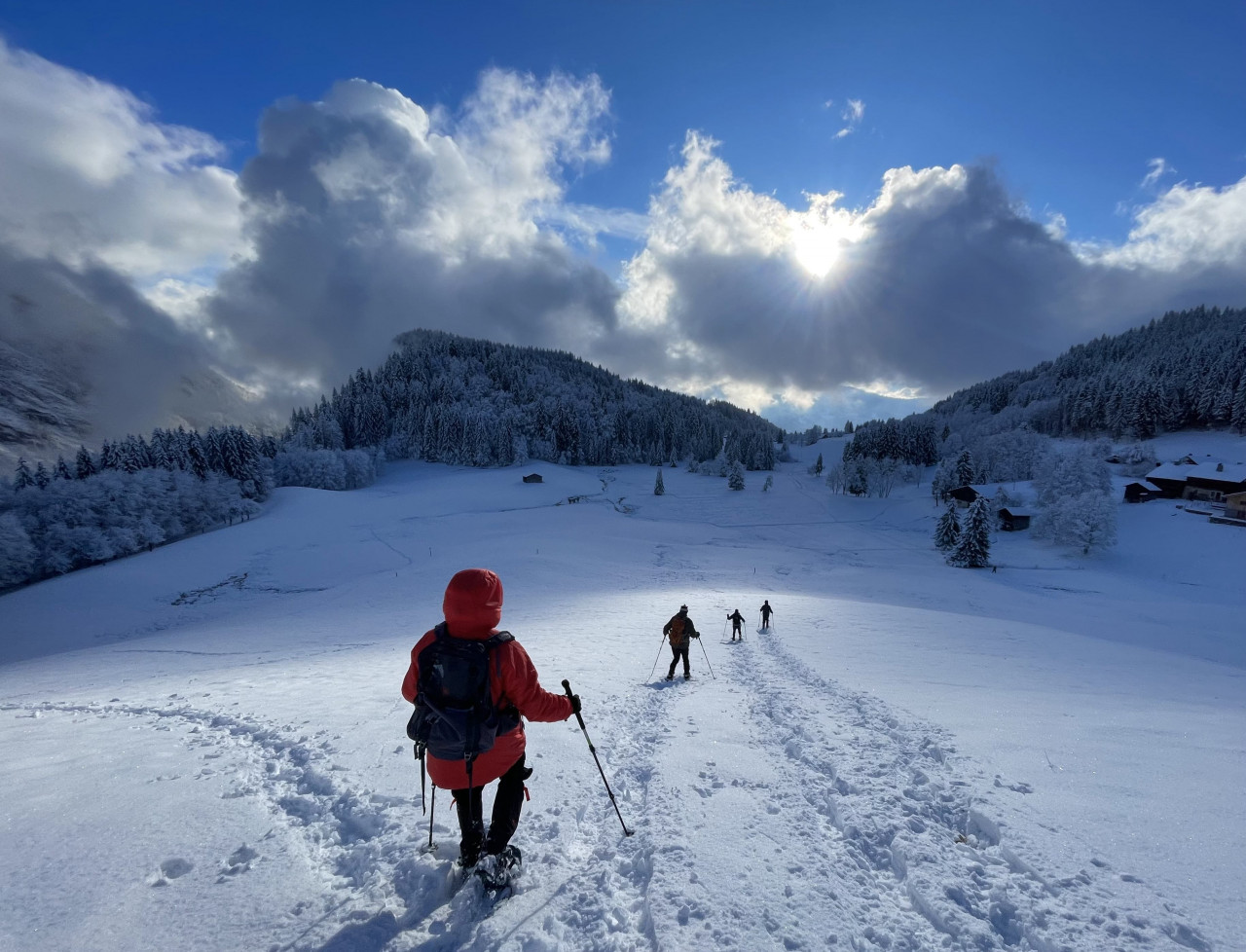 Snowshoeing in the mountains
Snowshoeing in the mountains
Wondering if you need special skills to enjoy a snowshoeing adventure? Good news - you don't! Snowshoeing is perfect for everyone, whether you're a seasoned outdoor enthusiast or trying it for the first time. If you enjoy summer hiking then you will love walking in winter. Our trips cater to various fitness levels, and most people find themselves comfortable with snowshoes within minutes.
In this blog, we'll cover everything you need to know, from physical requirements and gear to safety tips and what to expect on the trail. Ready to embrace a snowy adventure? Let’s get started!
No specific snowshoeing experience is required, as you'll likely adapt to the sensation within about 30 minutes. However, you should be comfortable walking in winter and dealing with winter conditions, such as the weather and the cold . The required experience level can vary by trip grade:
Click here for detailed descriptions of our snowshoe trip grades.
Snowshoeing requires a similar amount of energy as hiking in the mountains. The effort depends largely on the snow conditions:
People of all ages, from children to grandparents, have enjoyed our snowshoeing trips. A general hiking fitness level is sufficient to participate.
Your safety is our top priority, and we adopt 'best practice' by using the latest safety technology. Much like airbags in cars, avalanche safety gear - such as avalanche beacons - is a precaution. While we don't anticipate needing this equipment, having it enhances safety. An avalanche beacon is worn under your jacket and emits a signal, enabling us to locate you in the snow if necessary.
Yes, fresh snowfall can vary from a few centimetres to half a metre and does make our day out more challenging as we need to forge a path through the snow. Snowshoes help distribute your weight to prevent sinking too deeply. Your guide will lead, initially facing the most resistance, and those following will find it progressively easier as the snow compacts. To ease the burden, especially if you're tired, you can move toward the back of the line. We may also rotate positions, giving everyone a chance to experience leading the trail. Our guests usually love to experience creating a fresh track in virgin snow, it is a delight!
Attaching snowshoes to your rucksack is essential for hikes that start and end at lower, potentially snow-free altitudes, like the Traverse of the Chablais. This makes it easier to carry them while using trekking poles. In some cases, where snow is ample right from the start, this may not be necessary.
We bring packed lunches and snacks for flexibility, as lunch isn’t included in the trip fee. This is to combat food waste we find that most people are particular about what they like to eat while hiking. You can choose and prepare your lunch, either by ordering from your accommodation or buying from a local bakery or supermarket. While we sometimes stop at mountain huts for a hot meal, it’s best to carry your own food to ensure you have enough in case of any delays.
Dress as you would for a winter mountain walk. Alpine salopettes or downhill skiing gear are not suitable as they can be too restrictive and lead to overheating which in turn is tiring. For each trip, we provide a detailed kit list on our website. You can find this under 'Trip Information' for the specific trip you're interested in. This list includes all necessary clothing and items for your adventure.
Our snowshoes are adjustable and fit a wide range of sizes, from EU 37.5 (US 6.5, UK 4.45) to EU 47 (US 13, UK 12). If you have concerns about fit, especially with larger or chunkier boots, please email us your boot size in advance to ensure a proper fit. Consider wearing a warm, yet less bulky boot for a more comfortable experience with the snowshoes.
We equip our trips with TSL snowshoes, specifically the TSL Symbioz Access model, which are designed and produced in France. Having relied on TSL for over 20 years, we find they perform excellently for winter activities. We use the latest models which we are particularly beneficial as they flex with your walk, reducing knee impact. Additionally, we've upgraded our walking poles to models featuring a flip lock instead of a twist grip, simplifying adjustments and minimizing user error.
Keep up to date with Tracks and Trails through our newsletter, click here to sign up.
For more information about our cross-country ski- and snow shoe trips either custom or Scheduled Departures, speak to one of our expert team by calling +44 (0) 20 8144 64442 or email This email address is being protected from spambots. You need JavaScript enabled to view it. In addition to cross-country skiing we offer snowshoeing in winter, and in summer hiking, and trail running.
